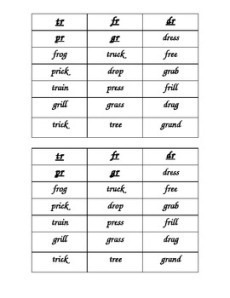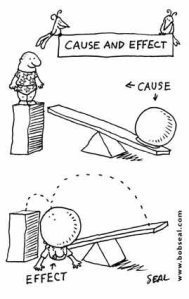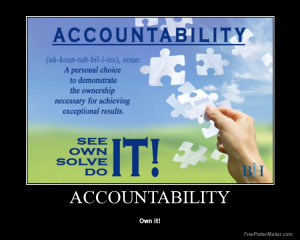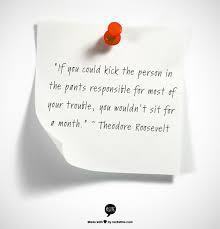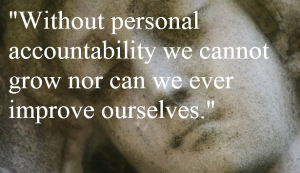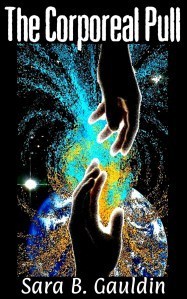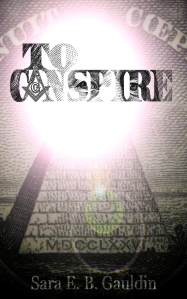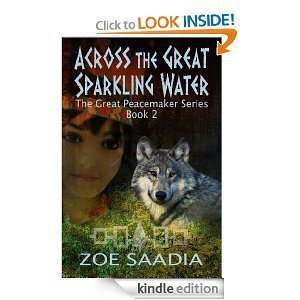Sara B. Gauldin's Blog, page 10
January 20, 2014
Teach Your Child to Read: What about those vowels that say their names?
Long vowel sounds are tricky for early readers. Most children are not ready to tackle them until they are reading at the end of first grade level to the beginning of second grade level. The first stop in understanding the sounds long vowels make is tracking down the illusive silent “e”. I tell my students a little story to help them understand about silent “e”. It goes like this:
Once at letter school all the letters went out to play on the playground. They had a big class and the playground was huge. There were benches for any letter that got tired or just wanted to talk. The letters k, i, and t sat down first, all in a row. They looked like this kit. I ask the students to help me sound out the word kit. After a while the letter e came and sat on the end of the bench. Now they looked like this kite. Sometimes e does not play well with others. He is sneaky and quiet. This time e sat down so quietly that nobody heard his sound. When nobody was looking he stuck out his foot under the bench, and kicked poor i; i was so surprised that he yelled out his own name instead of his sound. Nobody heard e at all.
I usually draw the foot kicking the letter and a speech bubble with the letter name. I repeat the drawing with other combinations. I always have them read the word with the short vowel sound, and then add the e to change the word that is created.
When teaching a child about long vowels it is best to tackle one vowel at a time. You may begin with long a as in cake or late. You can focus on long i as in kite or time. You can teach long o as in rope or nose. I usually save long u for last. Long u can make two sounds, u can save its name as in use, but more often it says oo as in mule. I skip long e entirely at this point. Long e does not typically follow the vowel-consonant-vowel-silent e pattern.
As each long vowel with silent e pattern is introduced it is best to compare the words to the short vowel sound made by the same letter. A child should have a good understanding of these patterns before attempting to compare long vowel patterns to one another.
Try This
Use word sorts to reinforce the long vowel sound compared to the short vowel sound. Like the other sorts discussed, go over the featured sounds and review with the child how the sounds change when the letter e is added to a word. Go over each word on the sort before attempting to cut the words apart. Help your child place the headers at the top of each column. Help your child to say each word before he or she lays the word under the correct heading. As your child progresses with their sorting accuracy you may try other techniques with the sort including blind sorts, timed sorts, and writing sorts.
Word Sort using word families with long a with silent e: http://www.teacherspayteachers.com/Product/Word-Sort-Long-a-silent-e-ake-ate-ave-465334
Word Sort Comparing short a to long a with silent e: http://www.teacherspayteachers.com/Product/Word-Sort-Short-a-compared-to-Long-a-465517
Word Sort using word families with long i with silent e: http://www.teacherspayteachers.com/Product/Word-Sort-Iong-i_e-word-families-ike-ide-ine-465773
Word Sort using word families with long o with silent e: http://www.teacherspayteachers.com/Product/Word-Sort-Long-o_e-families-ome-ose-one-472188
Use blending chunks to form words using set letters with the ability to move from short to long vowel sounds. Blending chunks are more useful as your child progresses to longer and more involved words. It becomes impractical to use single letters or push and say it letters after the introduction of blends. The blending chunks can be used in much the same way. Ask your child to find a beginning sound. When they identify the letter or blend that makes the sound they move it to the side. Then have them find the vowel by the short vowel sound. Add the ending sound. If the vowel will be made long by a final e, have them add it, then show how it changes the word from a nonsense word to a real word with a long vowel sound. Later you have the option to add endings to change the words tense or to make it plural. I recommend looking over the blends and making a list of the words you will use before you try the activity. Also, it is useful to progress with a degree of order so that the child can replace a few sounds at time rather than constructing each word in its entirety.
Short a compared to long a blending chunks: http://www.teacherspayteachers.com/Product/Phonics-Blending-Chunks-featuring-long-a_e-compared-to-short-a-465546
Short i compared to long i blending chunks: http://www.teacherspayteachers.com/Product/Word-Sort-short-i-compared-to-long-i-with-silent-e-465686
Short o compared to long o blending chunks: http://www.teacherspayteachers.com/Product/Phonics-Blending-Chunks-featuring-Short-o-Long-o_e-472279
As with any reading skill, at this point the key to improving reading is to apply the skill authentically while reading. Choose literature that offers some of the sounds or features your child is learning. Guide him or her to echo, the chorally read the book. Find the feature in the text. At this point it is critical for children to read aloud to an adult on a regular basis. It is tempting for busy grownups to ask a child to read on their own. This is not practical or good practice at this level of instruction.


January 12, 2014
Teach Your Child to Read: What about all the longer words with short vowel sounds?
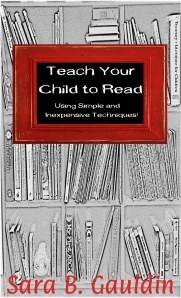
As your child is progressing with the reading acquisition process, they should now be being read to, practicing directionality word tracking and sight words and learning about the alphabet based phonics sounds. If all of these elements are in the works, and your child has become comfortable with using letters to create words, then it is time to take phonics sounds to the next level by incorporating basic blends and digraphs.
What are blends?
Blends are the result of two or three letter combinations that work together to make a sound. Blends keep the sound characteristics of the letters in them. Most early readers will focus on a few subgroups of blends that are used with frequency.
L blends include bl as in black, fl as in flop, cl as in clam, gl as in glad and pl as in plant.
S blends include sk as in skip, sm as in small, sl as in slip, sp as in spin sn as in snack, st as in stand, sc as in scar, and sw as in swat.
R blends include fr as in frog, br as in brown, cr as in cram, tr as in track, gr as in grand, dr as in drat, and pr as in prick.
Try This!
Use notecards to introduce the combination of two consonant sounds. Write one letter on a card. Review the consonant’s sound with your child. Add a second letter on a separate card. Review that sound. Place the cards side by side and help your child to sound out the consonant blend. It is best to begin with one family of blends. This way only one consonant will need to be changed as you introduce the sound combinations with the cards. For instance, if I was introducing r blends I would make an r card, then a card with f, b, c, t, g, d, and p. I would begin by modeling the fr sound. I would then take away the f, and add a b to model br. In the same manner as the push and say it letters, it is better to call the letters by their sound rather than their name.
Word sorts are a great tool to reinforce beginning blends. Before attempting to sort, talk to your child about the sounds they will look for. Guide them to sound out the letters. Help your child to read each word on the sort before ever cutting the letters apart. The child should place the underlined headers at the top of the column. The child should then identify words with like sounds before placing the words under the proper heading. Once the child has completed the sort with adult help, they should read the words to an adult down the column.
There are many other activities that can be used to extend the sort activity and make it more effective. After a few practices you can try a speed sort; have the child sort while you time them, then have them attempt to beat their time. Writing the sort in columns under the correct header is a valid practice. A blind sort is another option; Display only the headers. Call out the words from the sort or other sorts that have the same sound pattern while the child identifies which heading the word belongs with.
S Blends Sort
http://www.teacherspayteachers.com/Product/Word-Sort-s-blends-371178
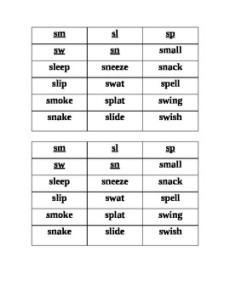
R Blends Sort
http://www.teacherspayteachers.com/Product/Word-Sort-r-blends-371149
Writing sorts are a great tool for reinforcing letter blends. Begin by dividing a sheet of paper into two sections. Label each side with a specific blend sound. Chose two blend sounds to compare. Call out words that begin with these sounds so you child can attempt to write the words in the correct column. Be aware of vowel sounds when you choose words. At this stage in phonics instruction is it best to practice blends with short vowel sounds (the sounds we learn with the letters when we learn the alphabet). After your child writes the word in the column talk with them about why it belongs there or why it does not. If the child misplaces the word have them sound the word out and move it to its correct place. Go over the correct spelling of the word once it is placed. Have your child make any needed corrections.
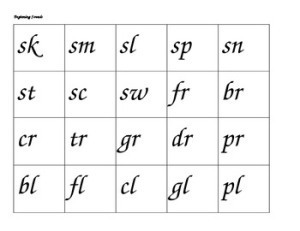
Blend Practice Cards
http://www.teacherspayteachers.com/Product/Blends-Cards-for-sorting-and-recognition-games-371121
These blends are great for “find it” games. Try laying the blends out for the child to see, then calling out a word that begins with one of the blend sounds. Guide your child to listen for the sounds at the beginning of the word and to stretch out the sounds they hear so they can determine the letter sounds that made them. The child should hold up or point to the correct blend. This activity can be limited by only giving the child specific blends to compare to one another. The same type of activity can be done by labeling note cards or slips of paper.
As your child grows with reading skills application is the key to mastery. Visit your local library. Ask your librarian to help you find books for early readers that contain letter feature you are practicing with your child. Echo read (have your child read each line after you as you read) then chorally read (read together) the book. Page by page have your child find the featured blend. It is practical to have your child write the words they find to reinforce the concept.
What are digraphs?
Digraphs are groups of two or three letters that join together to make their own separate sound instead of the individual letter sounds. Unlike the blends, your child will need to memorize the sound that each digraph makes as though it is a new letter of the alphabet. They will not be able to sound out a digraph in a way that will make a word correctly. For early readers there are four digraphs that are crucial.
ch as in chain or cheese, wh as in whale or where, th as in think or this, and sh as in shut or share
Try This!
Digraphs cannot be sounded out in the same way blends can. Because they make their own sound in the same manner as a letter of the alphabet they need to be memorized.
Make digraph flash cards and practice the sounds in the same manner as the letters of the alphabet. Begin with digraphs listed above. At an early stage of literacy these are appropriate. Help your child to practice the sounds until they are able to recognize them automatically.
Once your child is correcting the digraphs the majority of the time you can introduce the same activities that were used with the blends.
January 5, 2014
Choices for Success in the New Year
I have found that one of the most difficult comprehension skills to teach in reading is cause and effect. For years, I have wondered why or how something that seems very intuitive is so much of a challenge. Recently, I have realized that the answer is much the same as the question many of us ask of adult behaviors. Why?
Why do people commit crimes? Why do some people succeed while others fail? Why are some people rich while others are destitute? The trouble is, in our society the answer has gotten lost. Many people see their daily misfortunes as bad luck, or being redirected by some evil. So many people no longer see a basic cause and effect relationship for what it is. They paint every color distraction over situations that are simply black and white.
Just today CNN featured a young woman who told about the hardships of her life and made an argument for raising the minimum wage to improve her odds of living independently of her mother. The lady had dropped out of high school, and then had a child as a single parent. Red flag folks, those were her decisions to make, but she has to live with them, just like we all have to live with our own. She chose a tough path, but it is not an impossible journey. If she is unhappy with her income, the effect, then she needs to change the cause of the income, the job. How can this be achieved if she is not qualified for another job? She can return to school and set a positive example for her child. She can learn the skills to obtain a better-paying job. The effect of these actions would be a positive one. Instead she claimed that her situation was impossible, and that she was too old (at twenty-nine) to get an education because it may take until she was in her 40s. Wrong head set.. First of all, twenty-nine is relatively young. With the rollback of social security, many of the people in my generation will not retire until around 70 any ways. By that estimation, she has 40 more years in the workforce. A two-year degree would vastly change her earning potential for the next 38 years, but instead she is on national television complaining that her situation is impossible and expressing her desire to create inflation and devalue the income the rest of us working-class folks have worked our way up to in order to help her gain an advantage that she did not earn.
This type of learned helplessness is rampant in our society today. It seems that many people have stopped seeing that their own actions and behaviors are the biggest players in the game of life. In reality, people who choose to work earn money. People who pursue an education are likely to earn more of it. People who spend time and money enriching the lives of their children are more probable to have children who grow to be healthy and well-adjusted adults, who like their parents will pursue their goals rather than waiting for them the magically happen. The truth is, easy solutions and the path of least resistance is not a reality for very many people. The people in this world who are successful did not get there with luck alone. They used some combination of talent, hard work, determination, work ethic and personal accountability to get there.
On the same line of thought, I encountered a person who I was acquainted with in my teens. We spent a brief amount of time catching up. She told me about her job and children, and I told about mine. Then the comment was made. I was lucky that I had a good job. Lucky? I put myself through a community college with a learning disability. I became a computer technician and pulled a 4.0, so I could afford to attend a four year university. I completed three years of my two college degrees as a mother, two of them as a single mother. I took and passed all the necessary tests and benchmarks to obtain a teacher’s license. Yes, I have a decent job that pays me more than minimum wage. But no, luck had nothing to do with it. I made a choice. The comment was made that I was lucky to be able to send my children to private school. Again, I pay half of my salary to send them to the school they attend. That is a choice. I could keep the money and spend it on whatever I like. I choose to invest in my children. There is no luck involved.
As a child, my father repeatedly told me that I could have what I want in this life, but that each thing would be a choice, and I would have to give something up to achieve that goal. I gave up time and money and a social life to obtain a college degree. I gave up income to buy a better home and education for my children. I gave up sleep and television to become a published author. All of these choices are the cause of my place in life. Granted I could have made decisions that led me in wildly different directions from millionaire to junky.
Sometimes the choices we need to make to achieve our goals are not evident to us. I can relate to that as well. My new release The Corporeal Pull is not selling as well as I would like. It is not because it is bad; it is because it is an unknown book. Currently, I am trying to figure out what choices I need to make to bring my book release more success in the New Year. I cannot guarantee that my marketing decisions will be successful, but I can guarantee that not trying will never get my book or me anywhere. So that is my backward way of saying that my New Year’s resolution is to make the choices that I need to make to become a more successful author and to continue my parenting and teaching. As the present tense steadily erodes to the past, best wishes in the New Year, and make awesome choices!
December 30, 2013
Teach Your Child to Read! – I can read “the”, “and”, “I”, and many more words!
Up until this point the entire focus on reading has been on listening to stories and transitioning from rote letter knowledge to authentic words. It is now time to integrate another element that is essential to becoming a strong reader; sight word recognition. During the late eighties and early nineties, schools threw out the entire phonics concept in favor of a technique known as whole language. Essentially students were asked to read by memorizing the way words looked. Of course, this meant a huge about of memorization with no deeper understanding of the mechanics of the words. Children who had excellent memories and would have gone on to become a great reader anyway flourished, while others quickly fell flat. Children needed the letter and sound strategies that have been discussed to be able to break down an unfamiliar word to read it. It is impossible to memorize and have free recall of literally millions of words in the English language, but it is completely reasonable to expect children to learn letter sounds and blending techniques for a small set of letters.
Out of this bleak era of all or nothing education, a shining particle of truth was exposed; children needed to learn to recognize specific words automatically in order to gain reading fluency. These common words are known as sight words. As an adult, we read using sight words intuitively. It is not something that we have to think of consciously in order to do. This is not the case for a beginning reader. Imagine if you had to sound out every single word in this chapter to interpret what the words said. If this process was slow and tedious would you have any idea what you just read when you reached this point in the text? The answer is probably no. For children to gain a true understanding of what they read, they need to be able to read smoothly, with expression and at a reasonable pace. After all, the entire point of reading is to take meaning from printed text. If children are spending the whole time they are reading tediously breaking each word into its letter sounds instead of enjoying a great story, the appeal will be short lived.
By learning to recognize words that are used frequently automatically, children can dramatically speed up the reading process. This will allow for better processing of meaning from the text.
There are basically two commonly accepted commercial lists of sight words that are recommended for young children to learn to recognize automatically. One is the DOLCH list, and the other is the Fry’s list. I use the Fry’s list in my classroom, so I will focus on that resource here.
There are six hundred words in the Fry’s list. They are grouped into six 100 word sections that are arranged in order of increasing difficulty. Beginning readers should be able to handle four or five words per week. By the end of first grade or the beginning of second grade most children can handle up to ten words weekly. Begin with the words from the first one hundred list. When that list is mastered the child is ready for the second hundred. Learning to recognize sight words is a slow process that requires quite a bit of practice for some children.
It is worth mentioning that children who have demonstrated extreme difficulty with learning to read using phonics, such as those with an auditory processing disorder are sometimes instructed using a program that is purely focused on sight word acquisition.
A complete list of the Fry’s words can be downloaded here!
http://www.cantonschools.org/content/pdf_files/la_frylist.pdf
Try this!
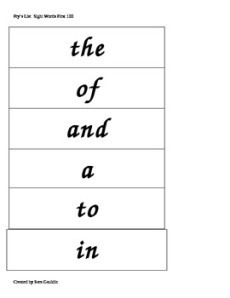
Start by making flash cards that feature the words! Note cards work well for this purpose. For simplicity or time conservation I have created lists that can be cut apart and used instantly here:
The First 100 Wordshttp://www.teacherspayteachers.com/Product/Frys-List-First-100-Flashcards-Wordwall-Cards-410803
The Second 100 Wordshttp://www.teacherspayteachers.com/Product/Frys-List-Second-100-Flashcards-Wordwall-Cards-471894
The Third 100 Wordshttp://www.teacherspayteachers.com/Product/Frys-List-Third-100-Flashcards-Wordwall-Cards-471904
The Fourth 100 Wordshttp://www.teacherspayteachers.com/Product/Frys-List-Fourth-100-Flashcards-Wordwall-Cards-472139
The Fifth 100 Wordshttp://www.teacherspayteachers.com/Product/Frys-List-Fifth-100-Flashcards-Wordwall-Cards-472148
The Sixth 100 Wordshttp://www.teacherspayteachers.com/Product/Frys-List-Sixth-100-Flashcards-Wordwall-Cards-472151
Our school’s reading specialist advocates printing the words using standard handwriting rules on brightly-colored sentence strips, and then cutting the words out so that the shape of the word’s structure is visible and obvious. This strategy is useful for visual learners.
Play ball! Post a word card on the refrigerator. Decide on a sport to use for the game; I use soccer, baseball, football, volleyball, snowball fights and leaf raking, and then jumping in the imagined pile of leaves in my classroom. Have the child shout each letter of the word while making the motion of the activity such as throwing, kicking, raking, etc. Aim the imaginary volley at the posted word. At the end of the spelling session shout the word and end with a big throw, kick or jump for flourish.
Spell the words while forming the letter shapes with the foam sword. Say the word with the final jab.
A child working with a partner or a parent can take turns writing the word on one another’s hand with a finger or a cotton swab.
Post words in a hallway or walkway, either on the wall, or on large pieces of paper on the floor. Have your child to say the words each time they travel through the area as the secret password for passage.
Use flashcards as flashcards; have your child read them as you flip through the stack of cards. This strategy is useful for quick reviews and occasional larger reviews of words the child has already been introduced to.
Play hot potato with flash cards. Pass the card back and forth for a set amount of time. Use a tooth brush timer, a song on the radio, a cook timer, a television commercial or some other event that ends itself naturally as the deciding factor in who must read the hot potato word. It is okay for the adult to read the word when they are caught by the timer.
Go fishing! This activity takes some preparation. I have found fish shapes on Google’s images in the past. I created sight word labels and adorned my fish using labels, then had them laminated. I placed a paper clip on each fish and placed them on a paper pond with the word side facing down. My students used a magnet that I attached to a string and stick to catch the fish. If they read the word correctly they could “keep the fish” in their pile. If they were incorrect they had to “throw the fish back.” A much simpler version of this game would be to add paper clips to the word cards you use and allow your child to fish with a magnet attached to a string.
Related articles
Dibels Conversion Chart For Fountas And Pinnell (tricceldengi.wordpress.com)
Literacy is Gaining Ground With The Release of DIBELS Standards, eReflect Announces (virtual-strategy.com)
Letter sounds click together to reach a major milestone (thenewkindergarten.wordpress.com)
Launching the Way to Reading Comprehension Infographic (elearninginfographics.com)
Fluency Presentation (britanygriffin.wordpress.com)
Book review: Dyslexia, Fluency, and the Brain (williamsandmintod.wordpress.com)
How AudioBooks Help Raise Reading Scores Infographic (elearninginfographics.com)
Reading Fluency For Kids Five Strategies (lyrics2learn.wordpress.com)
A Confluence of Fluency in Orlando (accidentvictimsalliance.com)


December 27, 2013
A Tough Market for Books: To the Most Determined Goes the Spoils!
My adventure into author land continued as I recently published my second book, The Corporeal Pull. As with my first book, To Conspire, the entire event has been a learning experience.
By book two, I felt prepared. I had already proven to myself that I could write, and I could format my own work. I learned the benefits of Amazon compared with Smashwords. I built a small but expanding network using Twitter. I now had an active blog. I had an extensive marketing plan that had many options I had never heard of during the release of my first book. What I learned is that I still have quite a bit to learn!
I have experimented with paid advertising. I am not confident that this has any effect at all. I have not tried every possible advertising source, and some of my attempts are still pending, but at this point I am not sure how far to push this approach. Obviously, if nobody ever hears about my book, it will never gain a reader, much less enough sales to pay for the ads. Conversely, a fellow author suggested that email ad attempts were likely stuck in people’s SPAM folders rather than a prominent place in the inbox. Obviously, another angle is needed.
I have been a bit more successful with obtaining reviews. I can honestly say that not one of my reviews was purchased or submitted by a person who I have met personally. I must also admit that the majority of my reviews came from readers who were given a free copy of my work. I did have one reviewer decline after reading a few chapters. I knew upfront this could happen. My book (or any book) will not appeal to every reader. I have to admit the rejection stung a bit. This individual was very kind and honest. She even allowed me to see her notes and gave me some worthwhile advice that I hope to keep in mind in future pursuits.
Speaking of free, I plan to schedule a free promotion soon. I have never tried this element of KDP. My last book was published with Smashwords first so exclusive publishing was not an option. I am looking into some promotional options with this attempt as well. The bottom line is I need to gain readers and recognition as an author that is worthy of being read. Again, free does not work if nobody knows the book exists!
One thing I have realized is that this is a process. The journey begins at publication; it does not end there! I read somewhere that the journey of a modern author is a marathon, not a sprint. Truer words have never been written. If I could back track that article, I would give the author credit with dancing and sparkly letters that proclaim the innate truth or the statement! If anyone reading this knows the original source, please let me know!
I have, in my own introverted way found the value of relationships in the writing business. It is true that there is an element of competition in this business, but the reality is that there are millions of books available from digital publication, and most authors are not in competition for the top spot. This means that it is permissible and even advisable to join forces with your fellow authors in the trenches. They can relate to your odd relationship with your computer, the emotional tie you have with your creation and the needs you have that must be filled to meet with any measure of success. In an ocean of possibilities, it is essential to have a knowledgeable sounding board for ideas, services, and vendors and shared promotion. I strongly recommend seeking out groups of authors, be they a local writing circle or an online cohort. When writing your book you are alone with your thoughts, but once you decide to publish those thoughts and share them with the world you forfeit your isolation and take on a challenge that is larger than yourself. Do not attempt to take on this type of challenge alone! One more thought; relationships are reciprocal. If you receive help from a fellow author or blogger, return the favor! If you give help repeatedly but get no help in return do not continue to invest your energy exclusively with that one source. You will use yourself up this way!
I wish everyone the best in the New Year. For all those who read; enjoy the escape! For all those who write, stick with it. Don’t give up. I know I won’t!
Related articles
Think Like a Publisher: 2014. Chapter Three: Projected Income (deanwesleysmith.com)
Authors – QUIT Doing This! #PubTip #EBBA (e-bookbuilders.com)
Think Like a Publisher 2014. Chapter Two: Expected Costs (deanwesleysmith.com)
Author Goals for 2014 (business2community.com)
Best of the Web Book Marketing Tips for the Week of Dec. 23, 2013 (amarketingexpert.com)
2013 has been a banner reading year (tubarks.wordpress.com)
Use YouTube to promote your book (inventingrealityeditingservice.typepad.com)
Tips for indie authors (taylorgraceauthor.wordpress.com)


My Review of A Story of River by Lana Axe
This tale takes the reader into a realm where elves and humans still reside as neighbors. The tumultuous relationship between mankind and the many races of elves must be set aside when an evil sorcerer finds a new way to rise to power. Ulda has found a way to bind the souls of men in order to glean their power to bend the wills of the animals and men around him. His opportunistic sorcery is unlimited by his inability to gain empathy or look beyond his own self-centered need for power and domination. Meanwhile, King Aelryk from the realm of men has realized his kingdom is in danger. A prophesy sets a quest in motion. He must travel to a “mythical” land to seek the help of an elemental spirit who is incarnate in the form of an elf from a race of ancient elves. The king seeks the assistance of Mel and his mate, Thinal to ensure the mission’s success. This elfish pair attempts to guide the royal party through the wilderness to ask for help before Ulda’s evil grip can extend further into the kingdom where it is already harming both men and elves. This edge-of-your-seat adventure lends an air of believability to an era and realm of magic and forgotten races. It is a must read!


My Review of Across the Great Sparkling Water ,Book 2 The Great Peacemaker Series by Zoe Saadia
After reading the first book in this series I knew I needed to continue reading! This captivating novel opens with the revelation that the duo of pivotal characters has survived the risky journey as they crossed part of the Great lakes via canoe. This arduous task pales in comparison with the challenges that lie before them! The two men must find a way to approach civilizations of people who have learned to view any stranger as a threat. In a time and culture where visitors were often put to death, how can these men hope to spread a message of peace? Despite huge obstacles and a few near misses the adventurers are able to find a few unique advocates who are suited to receive the message they carry. Even as their reach expands, the ultimate test is their ability to survive direct contact with an actual civilization. Two Rivers is determined to carry out the destiny he has seen repeated in his dreams. He feels himself pulled to Little Falls, Tekeni’s home village. This awkward homecoming has the potential to open peace talks if Two Rivers can survive the integration process! This book is a must read. The author has succeeded in interweaving a diverse culture with historical accuracy with a plot that will leave you ready for the next book!
Related articles
Historically, Native American Tribes Thought Gays Were Great! (everyonein.wordpress.com)
How climate change impacts indigenous communities (thealmagest.com)
Indian liaison to prisons raising awareness (billingsgazette.com)
Native indian Necklaces Layouts in which encourage gals (wangjunjun123.wordpress.com)
Native American Posting of the Day (12/24/13) (poetsareangels.com)


December 19, 2013
Teach Your Child to Read! m + a + p makes the word map!
After your child has had ample opportunity to use and explore words that they can decipher using word families, it is time to spend some quality time exploring the relationships between vowels and consonants. Essentially consonants are fairly consistent with the sound they are said to make (with the exceptions of c, g and y). The English language takes bits and pieces from countless sources, so for every rule there is an exception. In most words consonants make the sound your child had been learning all along. The vowels are a bit more versatile, and much more essential to the structure of a word. For the purpose of beginning word building it is best to stick with short vowel sounds. Short vowels are the letters a, e, i, o and u when they make their traditional letter sound. Vowels that make other sounds or say their own names are not short vowels.
Try This!
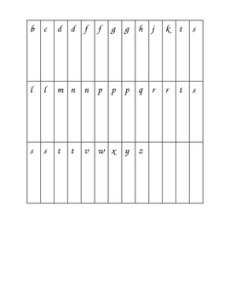
Use Push and Say it Letters (http://www.teacherspayteachers.com/Product/Push-and-Say-it-Letters-538214) to chunk and blend words. These tiny slips of paper feature each letter in a lower-case format with a space at the bottom that is left blank to allow a child to move the letter with their finger. I printed mine on card stock and laminated the ones at work to make them last. A simple print out on regular paper will work just fine. Cut the letters apart. Lay the letters facing the same direction out on a table in front of your child. Ask your child for a specific vowel sound first. “Find the letter that says “ahh”. When the child finds the specific letter, have them pull the letter out to the side and away from the other letters. Next, ask your child to find the beginning sound. “Find the letter that says “buh”. When the child finds the letter ask them to place it in front of the “a.” Now have your child look for the ending sound. “Find the letter that says “t”. Have your child position the letter at the end of the word. Finally, have your child say the sound of each letter as they move them together. After several practices, they should be able to see that the word is “bat.” From here it is easy to ask them to take off the “b” and replace it with another letter. Make sure that when you ask for letters, you are using the letter’s sound rather than its name.
Make a set of 26 lowercase letters on cards. These can be used in the place of push and say it letters for the same activity. The only drawback is when you reuse the materials for longer words you will not have all the letters you need.
Return to Starfall to focus on the second-level activities. Incorporate the digital books here as well as the previous word families. In each digital book, guide your child to put the mouse under each word. The web site will blend the word and help your child to put the phonics features to together to form a meaningful word.
This is the stage that the tag readers and other automated reading system marketed to children are effective, but not absolutely necessary. If you already have the system or can pick one up for a relatively inexpensive price at a yard sale or thrift shop, then now is the time to make use of it.
Leapfrog markets a variety of word building videos that are of good quality. Again this is only meant to be a compliment to reading and not a T.V. babysitter.
Related articles
Three Tips on how to teach literacy from Infant Literacy Development Expert, Kathleen Roskos. (mpepin1.wordpress.com)
Planning literacy teaching (hannasadventuresinteaching.wordpress.com)
Reflective Response (jherrdesign.com)
important early literacy terms that every parent needs to know (teachmama.com)
Improving Early Literacy at Green Magnet Elementary (childrenareourtreasure.wordpress.com)
Language and Literacy (capitalareaspeech.wordpress.com)
Literacy and Teachers (parra67.wordpress.com)
50 ways to teach how to read (funlanguagefun.wordpress.com)


December 16, 2013
Christmas Tidings
Christmas tidings bodes many kind things;
the warmth from the spirit of the season,
love of family and friends, and recollections of happy times
some bittersweet.
We bask in the glow of
sweet childhood memories;
the security of a parent’s love,
the traditions that tie the holiday to hearth and home,
and faith in the infinite grace of an infant so long ago,
yet we know Him in our hearts.
The detailed images of the babe in the manager,
the light of the world has arrived, hallelujah!
The Messiah whom we waited for came quietly into the world.
He was proclaimed by angels;
the Earth-bound son of God.
He lay swaddled in the arms of a virgin,
put out from his place of comfort,
in Heaven and on Earth;
a common king of kings now born of man.
We worship with sweet melodies,
as timeless as the tale.
Each celebrates the joyous beginning of
a life of miracles, teachings and pain.
The winter doldrums of humanity
are now illuminated by the light
of the savior’s birth;
just as the bleakness of the longest night
is brightened by festive trimmings.
The faith of a child;
trusting in the adoration of a parent,
belief in the kindness of man,
awe in the birth of a babe,
and enthralled with the anticipation of the season.
Related articles
XMES 2013 Christmas tidings and joy. (membershipengagementservicesblog.wordpress.com)
Victorians – O Tidings Of Comfort And Joy (homeandspirit.wordpress.com)
“…I bring you Good Tidings of Great Joy…” (clorisahansen.wordpress.com)
Christmas Ear Candy: God Rest Ye (superversity.wordpress.com)
friday finds: good tidings (foresthillsvintage.com)
Christmas Time! Christmas Bells! Christmas Peace! (godssceneryandpromises.wordpress.com)


December 8, 2013
Soul Mates


In today’s modern world, the concept of love has stretched and conformed to the needs of today. Of course, there are many kinds of love present within western culture; a parent’s love for a child, a child for a parent, a sibling for a sibling, a friend’s compassion for a peer, or a teacher for her students. But what has become of romantic love?
The Concept of Soul Mates is pivotal in my new book, The Corporeal Pull!

